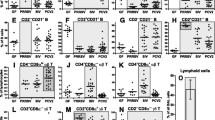Abstract
Many experimental studies have shown that orthomyxo- and paramyxo-viruses may be pneumotropic, but not enterotropic in mammals. On the other hand, these viruses are both pneumotropic and enterotropic in avian species. We have devised a new method for detecting virus receptor possessing cells (VRPC) in tissue sections. VRPC could be detected in the cells lining the airways of both mice and birds. The mode of distribution of VRPC in mouse digestive system differed remarkedly from that in avian digestive system. VRPC were not found in the epithelium of mouse digestive systems whereas the epithelium of bird digestive system were abundant in VRPC. When the large intestines from mice or duck undergoing laparotomy and inoculated directly into intestine with influenza virus were examined, viral antigen was detected in the epithelial cells of duck colon, but not in mouse intestines. From the study utilizing the new method, it could be concluded that the distribution mode of VRPC is one of the most important factors determining the virus tissue sepcificity.
Similar content being viewed by others
References
Appell LH, Kovatch RM, Reddecliff JM, Gerone PJ (1971) Pathogenesis of Sendai virus infection in mice. Am J Vet Res 32:1835–1841
Basarab O, Smith H (1969) Quantitative studies on the tissue localization of influenza virus in ferrets after intranasal and intravenous or intracardinal inoculation. Br J Exp Path 50:612–618
Harter DH, Choppin PW (1965) Adsorption of attenuated and neurovirulent poliovirus strains to central nervous system tissues or primates. J Immunol 95:730–736
Haywood AM (1974) Characteristics of Sendai virus receptors in a model membrane. J Mol Biol 83:427–436
Holmgren J, Svennerholm L, Elwing H, Fredman P, Strannergard O (1980) Sendai virus receptor: Proposed recognition structure based on binding to plastic-adsorbed gangliosides. Proc Natl Acad Sci USA 77:1947–1950
Ito Y, Yamamoto F, Takano M, Maeno K, Shimokata K, Iinuma M, Hara K, Iijima S. The distribution of cellular receptors for Sendai virus in mice. Arch Virol (in submitting)
Kida H, Yanagawa R, Matsuoka Y (1980) Duck influenza lacking evidence of disease signs and immune response. Infect Immun 30:547–553
Klenk H-D, Garten W, Bosch FX, Rott R (1982) Viral glycoprotein as deterninats of pathogenicity. Medical Microbiology & Immunology 170:145–153
Kunin CM, (1962) Virus-tissue union and the pathogenesis of enterovirus infections. J Immunol 88:556–569
McLaren LC, Holland JJ, Syverton JT (1959) Tha mammalian cell-virus relationship. I. Attachment of poliovirus to cultivated cells of primate and non-primate origin. J Exp Med 109:475–485
Mims CA, Murphy FA (1973) Parainfluenza virus Sendai infection in macrophages, ependyma, choroid plexus, vascular endothelium and respiratory tract of mice. Am J Pathol 70:315–328
Nagai Y, Shimokata K, Yoshida T, Hamaguchi M, Iinuma M, Maeno K, Matsumoto T, Klenk H-L, Rott R (1979) The spread of a pathogenic and an apathogenic strain of Newcastle disease virus in the chick embryo as depending on the protease sensitivity of the virus glycoproteins. J Gen Virol 45:263–272
Nagai Y, Yoshida T, Hamaguchi M, Naruse H, Iinuma M, Maeno K, Matsumoto T (1980) The pathogenesis of Newcastle disease virus isolated from migrating and domestic ducks and the susceptibility of the viral glycoproteins to proteolytic cleavage. Microbiol Immunol 24:173–176
Robinson TWE, Cureton RJR, Heath RB (1968) The pathogenesis of Sendai virus infection in the mouse lung. J Med Microbiol 1:89–95
Rosztoczy I, Sweet C, Toms GL, Smith H (1975) Replication of influenza virus in organ cultures of human and simian urogenital tissue and human foetal tissues. Br J Exp Path 56:322–328
Sweet C, Smith H (1980) Pathogenicity of influenza virus. Microbiological Reviews 44:303–330
Toms GL, Rosztoczy I, Smith H (1974) The lacalization of influenza virus: Minimal infection dose determinations and single cycle kinetics studies on organ cultures of respiratory and other ferret tissues. Br J Exp Path 55:116–129
Van Nunen MCJ, van der Veen J (1976) Experimental infection with Sendai virus in mice. Arch Gesamte Virusforsch 22:388–397
Webster RG, Yakhno M, Hinshaw VS, Bean WJ, Murti KG (1978) Replication and characterization of influenza viruses in ducks. Virology 84:268–278
Author information
Authors and Affiliations
Rights and permissions
About this article
Cite this article
Ito, Y., Yamamoto, F., Takano, M. et al. Comparative studies on the distribution mode of orthomyxo-virus and paramyxo-virus receptor possessing cells in mice and birds. Med Microbiol Immunol 171, 59–68 (1982). https://doi.org/10.1007/BF02122708
Received:
Issue Date:
DOI: https://doi.org/10.1007/BF02122708




